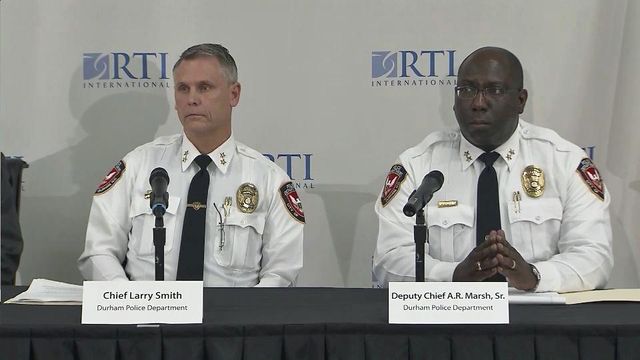Study: Black male drivers more likely to be pulled over in Durham
The study, performed by RTI International, was released Thursday and examined 151,700 traffic stops conducted between January 2010 and October 2015.
Posted — UpdatedThe study, performed by RTI International, was released Thursday and examined 151,700 traffic stops conducted between January 2010 and October 2015. In order to study the racial distribution of the traffic stops, researchers said they used the “veil of darkness” approach, which is based on the assumption that police officers are less able to determine the race of a motorist after dark.
The research found that in traffic stops with male drivers, the odds of a stopped driver being black were 20 percent higher during daylight than times of darkness. The research also indicated that the racial disproportionality declined over the six-year period, with black male drivers most represented between 2010 and 2013.
"We don't know what causes it, the report doesn't show. That's why it's important among us as law enforcement leaders, when we find things like this, to try to address it and look at that," said Interim Chief Larry C. Smith."Those are some of the things we'll be looking at as we think about what our HEAT team does, the training they receive, and teh community of Durham's expectations of its police department."
By 2014, the difference in the odds of a black driver being pulled over during the daytime were indistinguishable, said a press release from the Durham Police Department.
“We believe the improvements in the disproportionality are a result of the changes in our policies, procedures and training that we’ve instituted in the past few years,” said Smith in a statement. “This shows that we are willing to listen to our community and make adjustments in our policing practices when necessary.”
No evidence of racial disproportionality was found among female drivers, police said.
Durham police said that the results of the analysis showed that the levels of disproportionality varied by different units within the organization. The greatest difference was found among the High Enforcement Abatement Team (HEAT), which focuses on drug, vice, and gang violence, while where was no evidence of disproportionality in stops conducted by the Durham Police Department’s Traffic Services unit, police said.
Durham police said that in order to ensure fair and balanced policing during traffic stops, HEAT, patrol, and Traffic Services units are outfitted with in-car cameras to capture interactions. In addition, the department performs biannual analysis for any officers with at least a 75 percent or higher stop rate of minorities.
• Credits
Copyright 2024 by Capitol Broadcasting Company. All rights reserved. This material may not be published, broadcast, rewritten or redistributed.





